NR 601 Week 6 TD 2
Document Content and Description Below
Men and women both can experience urologic concerns with aging. This week's presentations and readings covered urologic concerns and common problems. Utilize the national guidelines and scholarly ref... erences to develop your responses. Urinary Incontinence Men and women can both get UTIs. What factors contribute to the development of a UTI in men versus women? Include risk factors. Men= BPH, kidney stone, urinary retention, self catheterization, cauterization in the hospital, Women= anatomy, poor hygiene, In which sex is a UIT more concerning and why? Men are more concerning BPH As a provider it is essential for you to know to interpret DRE findings and what your next step should be. The American Urology Association has specific recommendations based on age. Be sure you know these because the guidelines will guide your patient counseling and treatment plan. • What does the AUA state about drawing PSA levels? 4K score • If you do decide to draw a level what specific counseling should you include in your education today? Anal sex and ejaculation • Urinary tract infections • It is important to know when to treat a UTI and when not to treat. Is there a particular situation where you would not treat a UTI? Urinary Incontinence What factors contribute to the development of a UTI in men versus women? Cystitis, which is the most commonly seen lower urinary tract infect (UTI), and pyelonephritis, the most commonly seen upper UTI (Uphold & Virginia Graham, 2013). For women, the main cause of a UTI is usually related to bacteria that enter the urethra (Uphold & Virginia Graham, 2013). The urethra is shorter in women than compared to men plus it is closer to the perirectal area, making women more prone to infections (Uphold & Virginia Graham, 2013). Other risk factors for women include using tampons, if they’re postmenopausal, increased sexual activity, and pregnancy (Uphold & Virginia Graham, 2013). For men, it is uncommon for them to develop cystitis and pyelonephritis because their urethra is longer but it does happen (Uphold & Virginia Graham, 2013). In younger men, it is believed that a UTI can occur because of subclinical prostatitis or endogenous bacteria without an underlying cause (Uphold & Virginia Graham, 2013). In older men (over 50), UTI’s are generally related to structure abnormalities such as BPH, obstruction such as kidney stones or urethral strictures, or retention issues such as with a neurogenic bladder (Uphold & Virginia Graham, 2013). Other risk factors include lack of circumcision, rectal intercourse, HIV infections with low CD4 and T-lymphocyte counts, and intercourse with a female who has vaginal colonization of uropathogens (Uphold & Virginia Graham, 2013). In which sex is a UTI more concerning and why? In general, men are more concerning when it comes to UTIs because their symptoms are generally nonspecific and therefore can go left untreated (Brusch, 2017). BPH What does the AUA state about drawing PSA levels? According to AUA guidelines, men less than 40 years old do not need to be screened and men between 40 to 54 years old do not need to be screened unless they have a strong family history of prostate cancer or they are African American (AUA, 2015). For men who are between 55 to 69 years old, the AUA suggests screening based on the man’s preference and values; it suggests having the patient weigh the benefits against the cons before proceeding (AUA, 2015). For this age group, if a PSA is desired, screening regimens can be tailored based on the baseline PSA results (AUA, 2015). Lastly, the AUA does not recommend screening men who are over 70 years of age, unless they are in excellent health, or who they feel will not live greater than 10 to 15 years (AUA, 2015). If you do decide to draw a level what specific counseling should you include in your education today? It is important to let the patient know that an elevated PSA does not always mean cancer. PSA is a glycoprotein that can be produced by malignant and benign (Goroll & Mulley, 2014). It is also important to let the patient know that certain activities or situations can increase the PSA as well, these include urinary retention, trauma to the area, rectal intercourse, UTI and prostatic infections, post ejaculation for 1 to 2 days after, BPH, and post cystoscopy (Goroll & Mulley, 2014). According to Goroll & Mulley (2014), distinguishing between BPH and prostate cancer can be difficult and will require a biopsy. It is important to know when to treat a UTI and when not to treat. Is there a particular situation where you would not treat a UTI? A UTI should not be treated if the patient is asymptomatic, specifically they have no complaints of dysuria, urgency, frequency, fever, flank pain, abdominal pain, or tachycardia and as long as the urinalysis with culture does not show more than 100,000 CSUs (Brusch, 2017, Uphold & Virginia Graham, 2013). References American Urological Association (AUA) (2015). Early detection of prostate cancer. Retrieved from http://www.auanet.org/ Brusch, J. (2017). Urinary tract infection (UTI) in males. Medscape. Retrieved from https://emedicine.medscape.com/article/231574-overview? pa=GuFbuPcIhv42epaWs2%2FZAagvABX7DQOZPH6FcjuCfAYUKqQ1G iwMtHyup08jIUnGs7CF3wx2Tu1U792SxywYLg== Goroll, A. H., & Mulley, A. G. (2014). Primary care medicine: Office evaluation and management of the adult patient (7th ed.). Retrieved from https://bookshelf.vitalsource.com Infectious Diseases Society of America. (2015). Don't treat asymptomatic bacteruria with antibiotics. Retrieved from http://www.choosingwisely.org/clinician-lists/infectious-diseases-society- antibiotics-for-bacteruria/ - .Wnp7l9w2qTI.facebook Uphold, C. & Virginia Graham, M. (2013). Clinical guidelines in family practice, 5th edition. Florida: Barmarrae Books, Inc. ****Pearson, R., & Williams, P. M. (2014). Common questions about the diagnosis and management of benign prostatic hyperplasia. American Family Physician, 90(11), 769-774. Retrieved from https://chamberlainuniversity.idm.oclc.org/login? url=http://search.ebscohost.com/login.aspx? direct=true&db=mdc&AN=25611711&site=eds-live&scope=site ****** INSTRUCTOR: Whitney, Excellent discussion on UTIs and BPH! When are urine cultures typically warranted? Have you treated UTIs or BPH in clinicals so far? Can you share a case example you had? Hi Dr. Coyle, Urine cultures are typically warranted for any patient that is suspected of having a complicated UTI or any patient who does not respond to the initial antibiotics given (Michels & Sands, 2015). I have not treated BPH yet but I have treated a few men and women with UTIs. The most recent patient I saw that needed a urine culture had been treated at a walk in clinic before coming to establish care at my clinical location. She was started on Cipro but a week later was still experiencing dysuria, frequency, and urgency. I performed a UA dipstick and the results were positive, as my preceptor and myself suspected. A culture was sent to the lab and we started her on Bactrim DS for 5 days and Pyridium 200 mg. We had the patient follow up in 3 days if she was still experiencing symptoms. Luckily, the Bactrim DS worked and she did not need to follow up. References Michels, T. and Sands, J. (2015). Dysuria: Evaluation and differential diagnosis in adults. American Family Physician, 92(9), 778-788. Retrieved from https://www.aafp.org/afp/2015/1101/p778.html PEER: Hi Stephanie, Great post, I really enjoyed reading it! In regards to PSA screening, the AUA does not recommend routine PSA screening and I too put that in my original post. However, personally I do not agree with them. My preceptor’s uncle was just recently diagnosed with adenocarcinoma of the prostate, his Gleason score is 3+4=7. He does not have any risk factors for prostate cancer but has been having serum PSAs done since he was in his mid fifties. His PCP screened his as part of his yearly check-up and it was high, but his PCP knew to keep an eye on it. The level slowly increased every year, however, a year and a half ago it increased significantly and has been increasing since then. Using the 4k score, his level was 7.1, this is when they finally decided a biopsy was necessary. Prostate cancer is graded based on the numbers 1 through 5; pathologist look at the sample under the microscope and determine how many cells are cancerous and how many, if any, are normal (ACS, 2017). This is the Gleason system. Prostate cancers will have different grades in different areas, therefore, the grade of the cancer is made up by using the 2 numbers that are the most prevalent in the biopsy samples (ACS, 2017). Once these 2 numbers are established, they are added together to yield the Gleason score (ACS, 2017). The first number in the score is the number that is most prevalent in the samples (ACS, 2017). The highest a score can be is 10 (ACS, 2017). In regards to my preceptor’s uncle, he has mostly grade 3 and some grade 4 but his combined score is high, 7 out of 10. He does not have any signs or symptoms that would indicate anything is wrong, which is the scariest part to me. Had his PCP gone by these guidelines, he would have no idea he had a problem. By the time he started showing symptoms it could be too late. So, while I respect guidelines and think they serve their purpose, this is one guideline I will not be following. A serum PSA does not harm the patient and can help saves lives, because to me, even 3 percent of men dying from prostate cancer is too much. The good news is there are multiple ways to treat prostate cancer now whereas it used to be a total prostatectomy. American Cancer Society. (2017). Understanding your pathology report: Prostate cancer. Retrieved from https://www.cancer.org/treatment/understanding-your- diagnosis/tests/understanding-your-pathology-report/prostate- pathology/prostate-cancer-pathology.html SUMMARY: [Show More]
Last updated: 1 year ago
Preview 1 out of 7 pages

Reviews( 0 )
Document information
Connected school, study & course
About the document
Uploaded On
Feb 21, 2023
Number of pages
7
Written in
Additional information
This document has been written for:
Uploaded
Feb 21, 2023
Downloads
0
Views
81


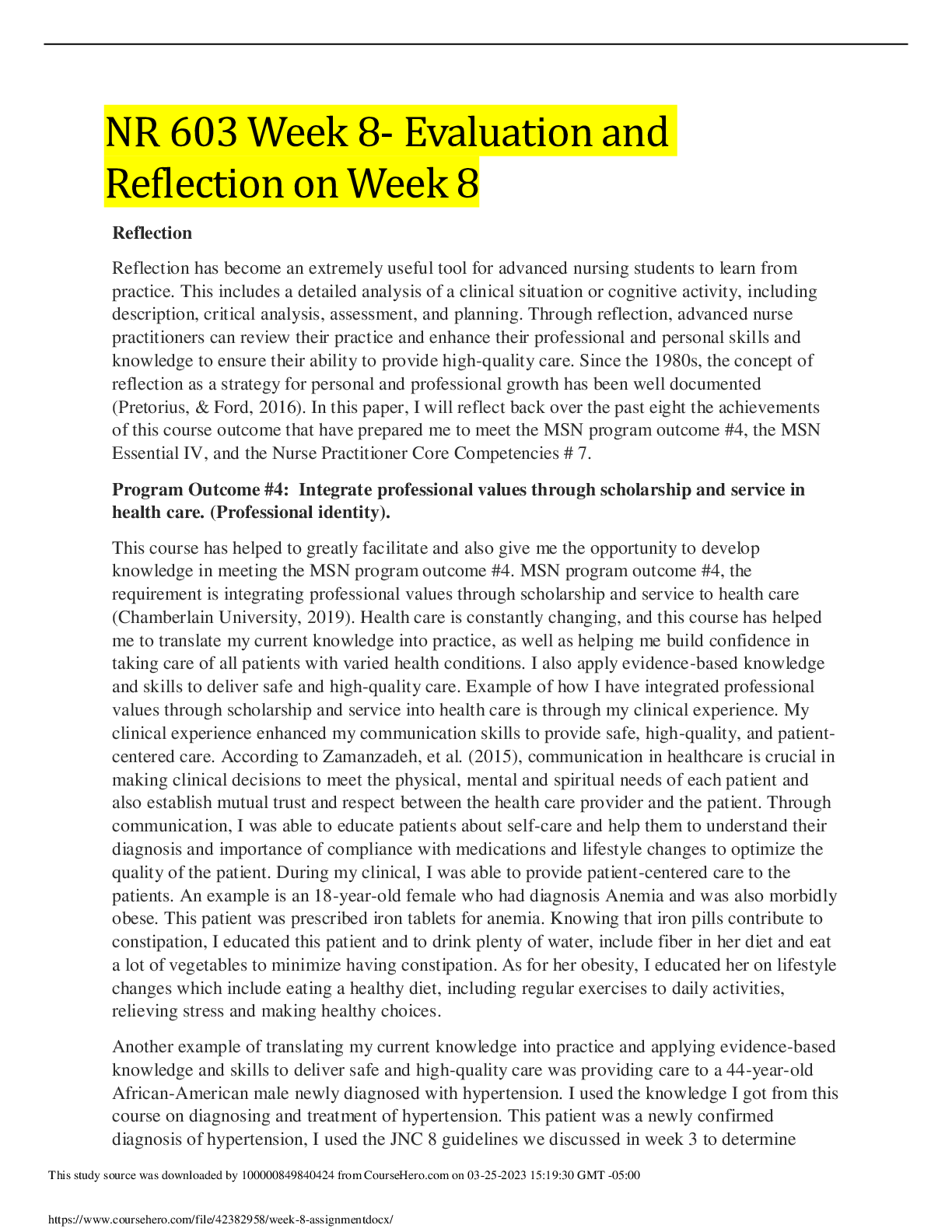


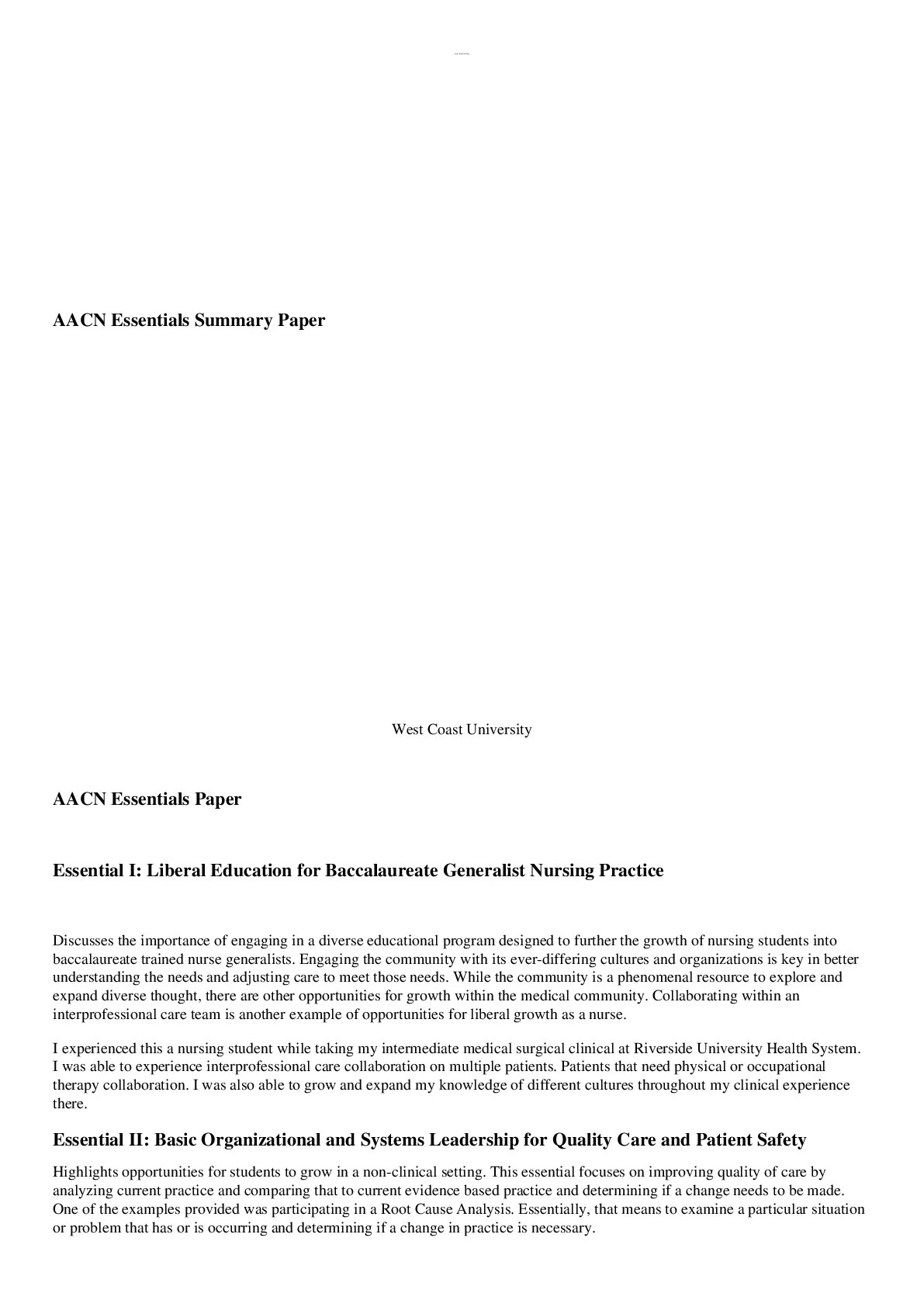




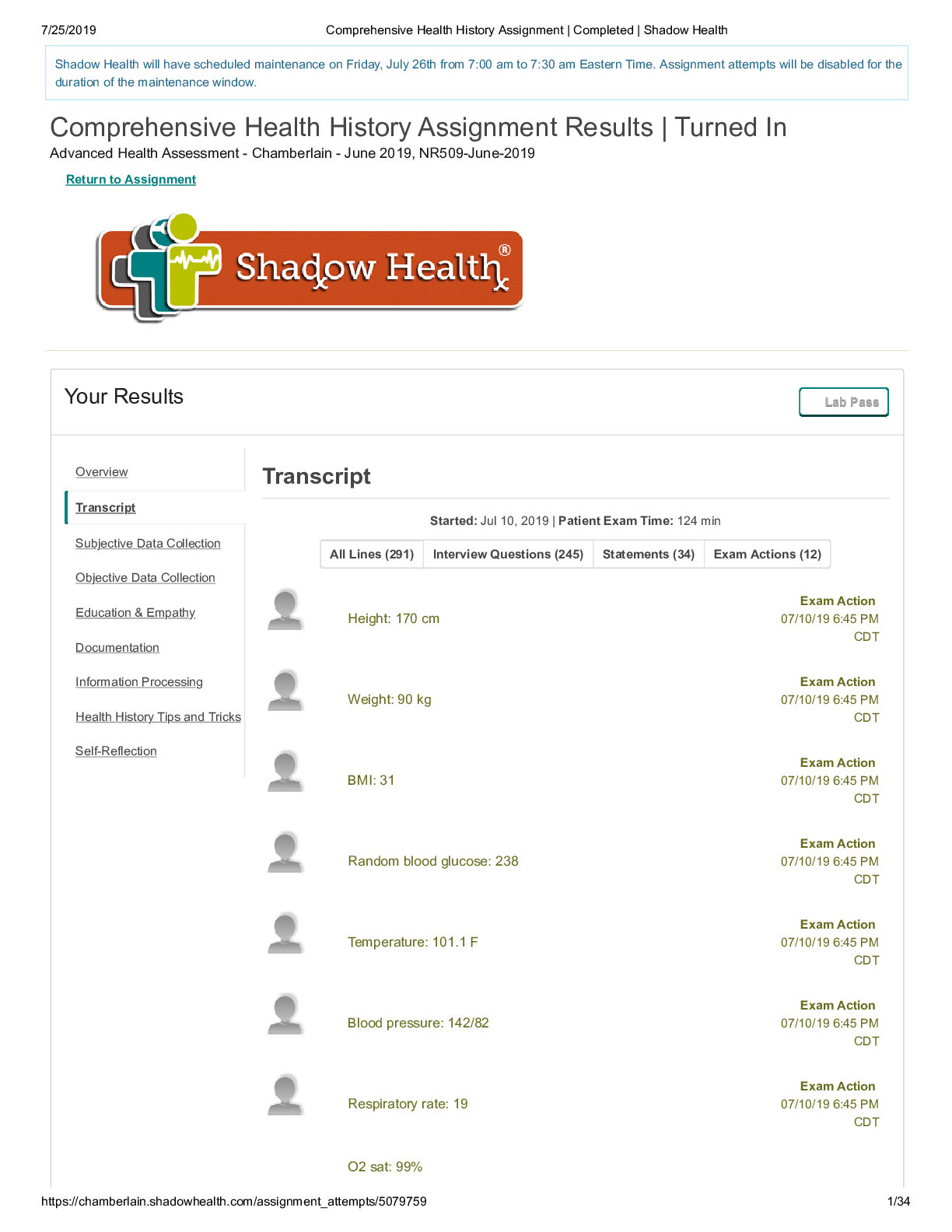
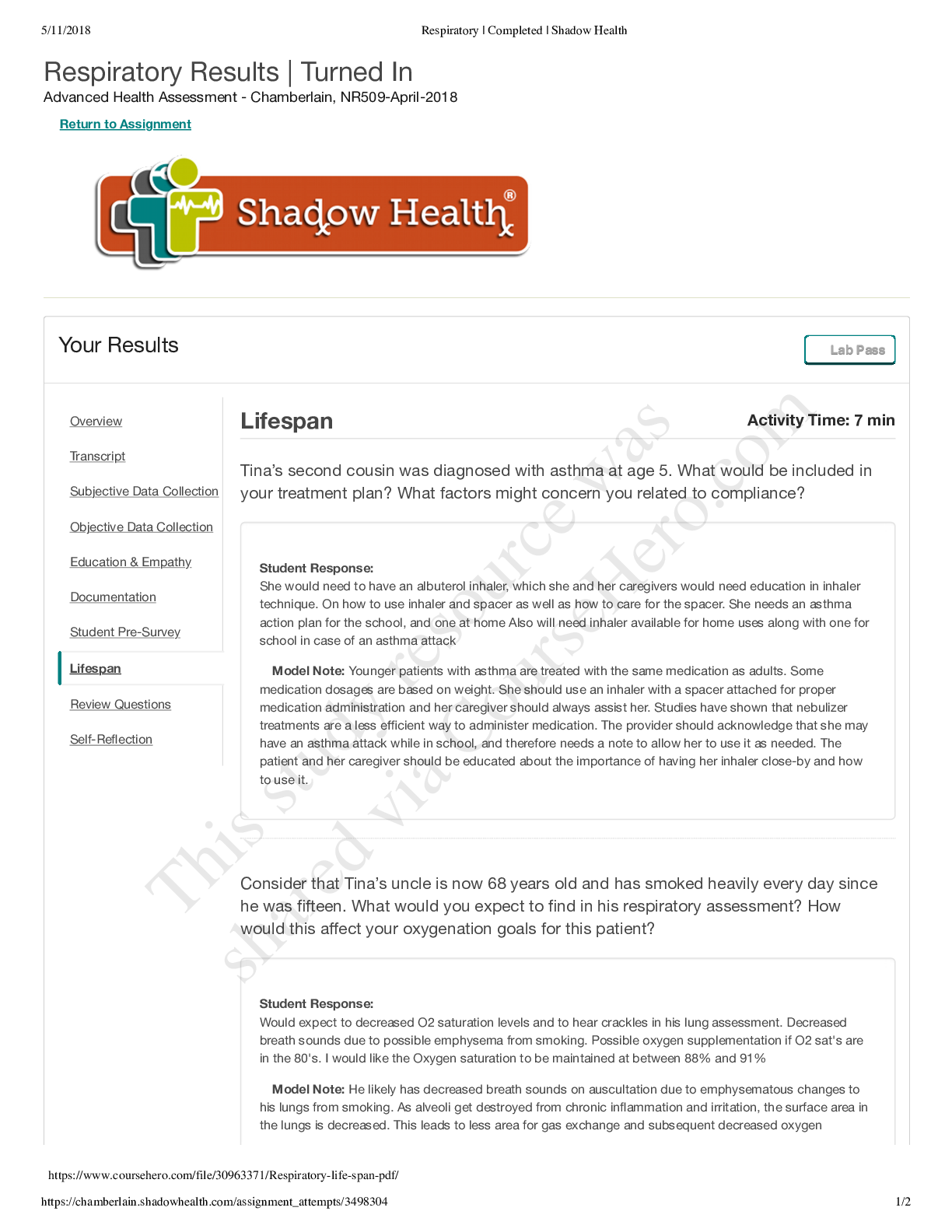


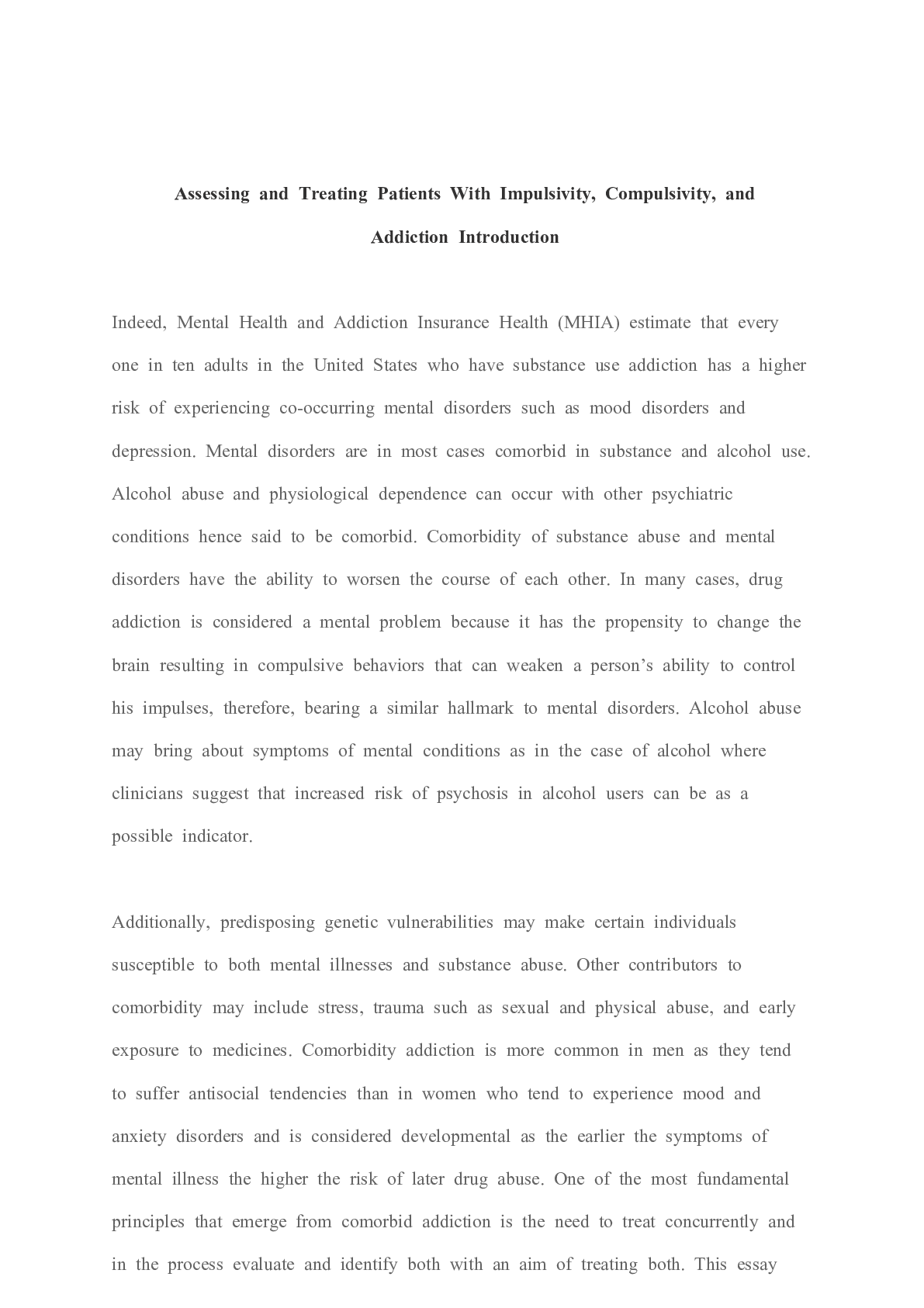




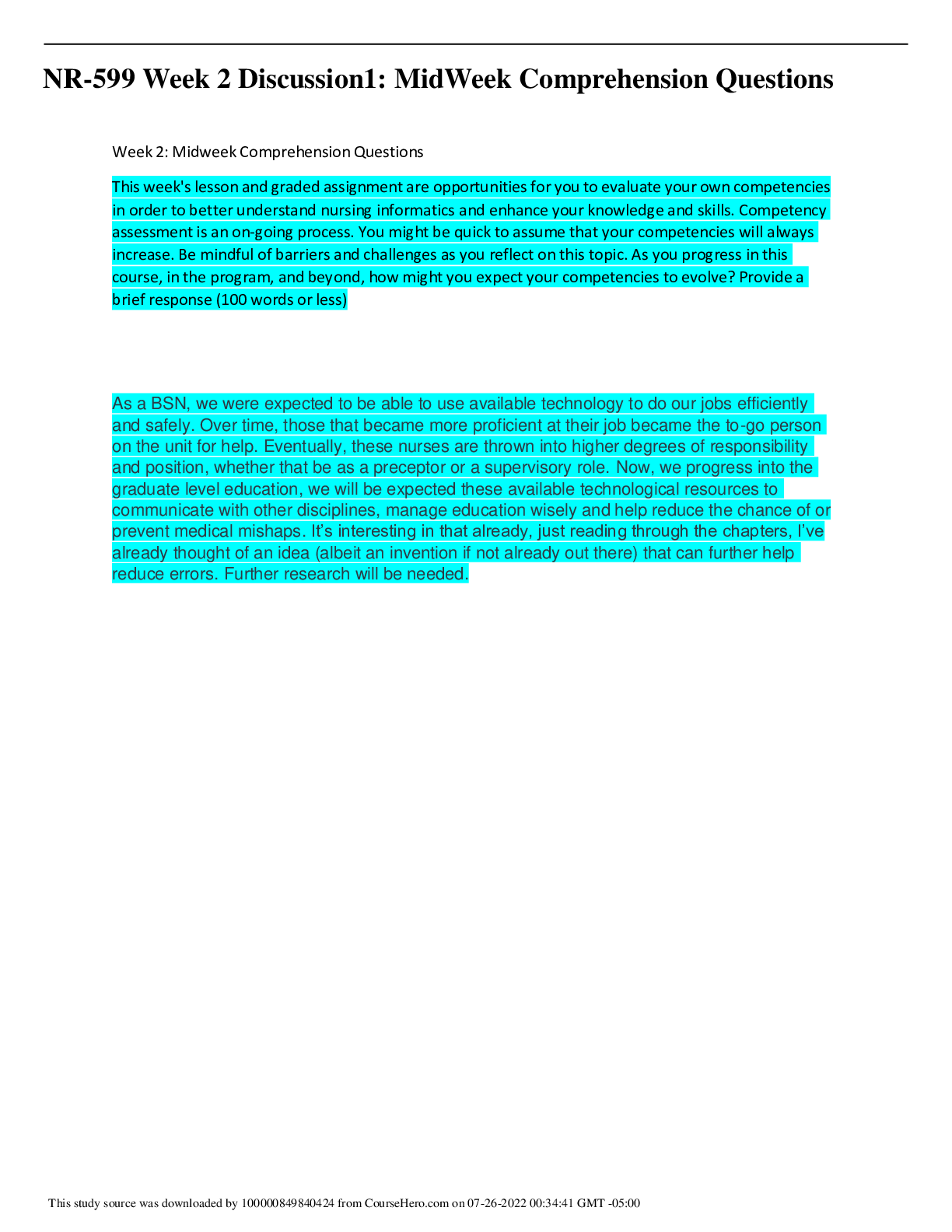

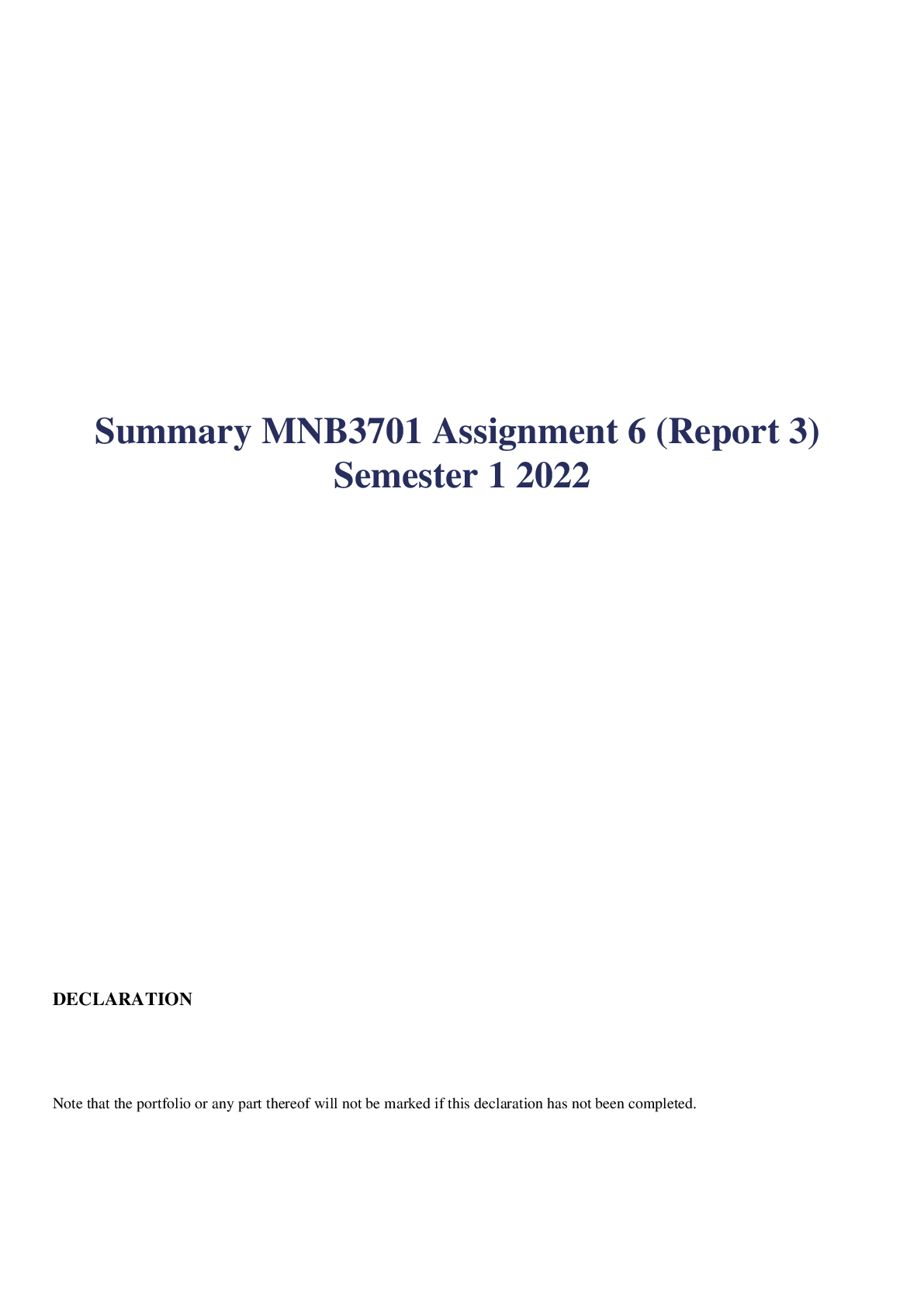
.png)


